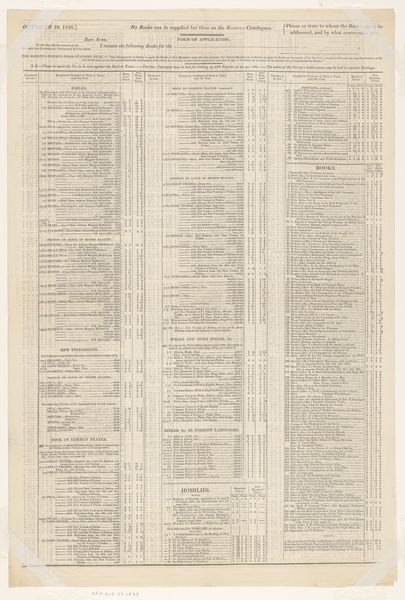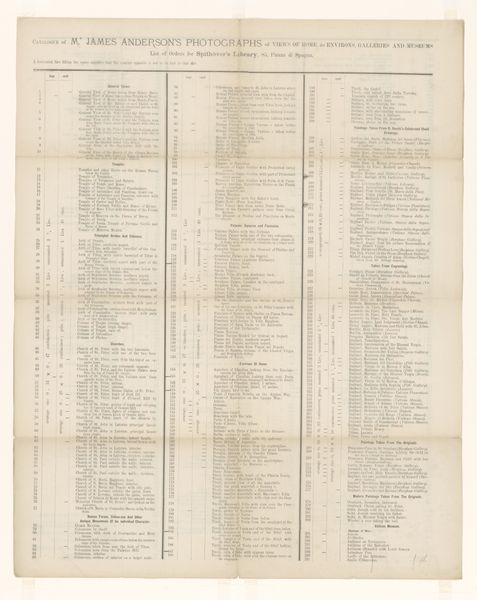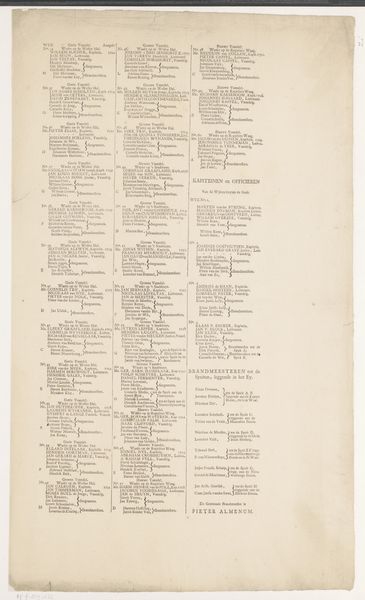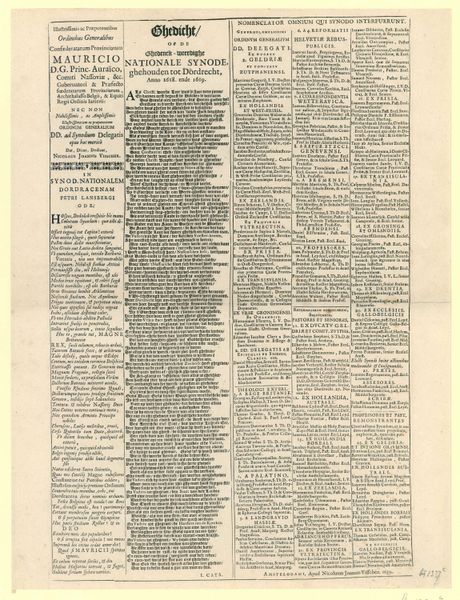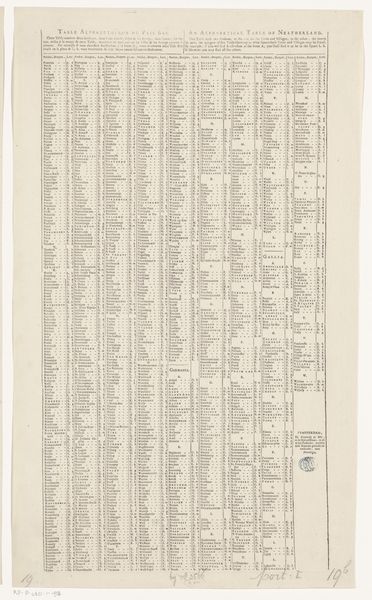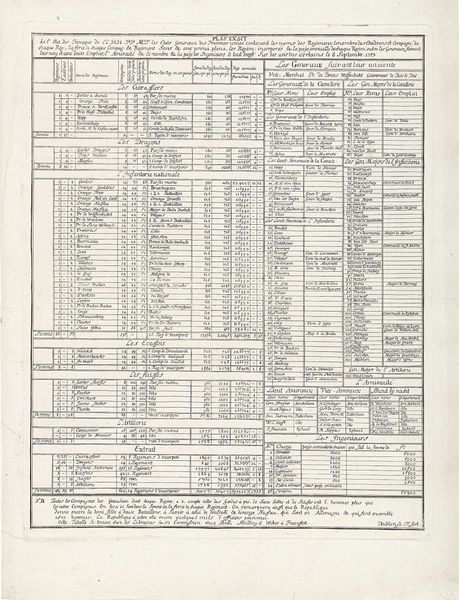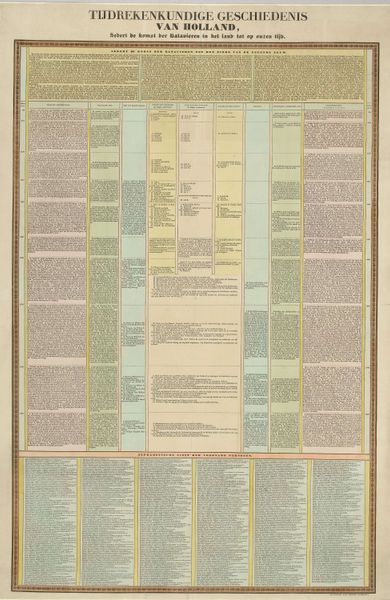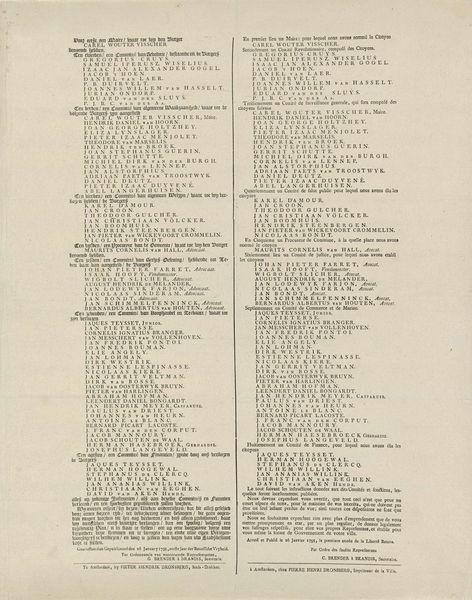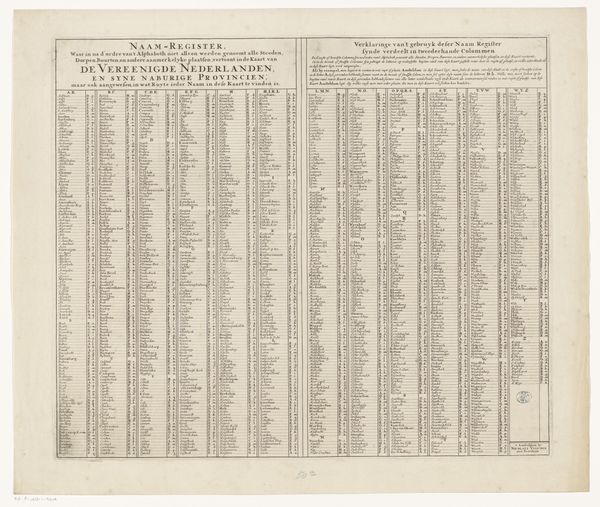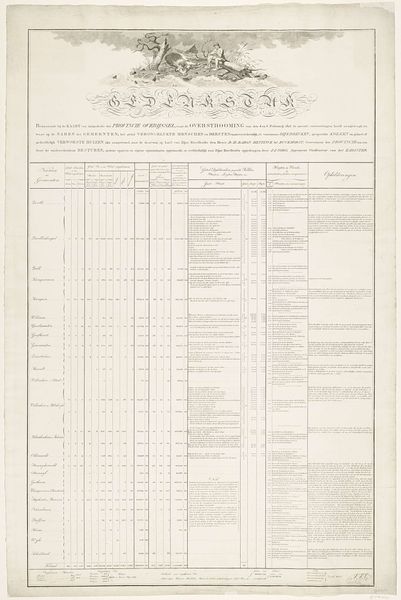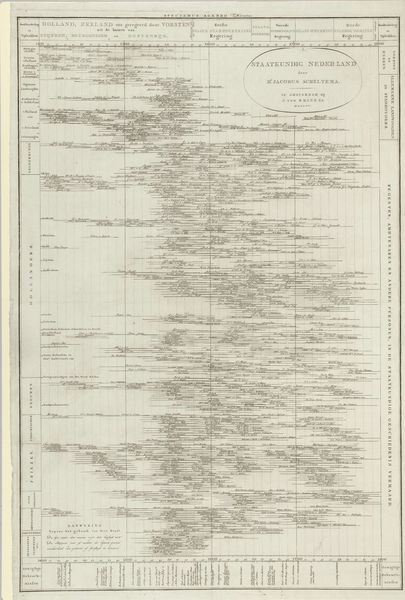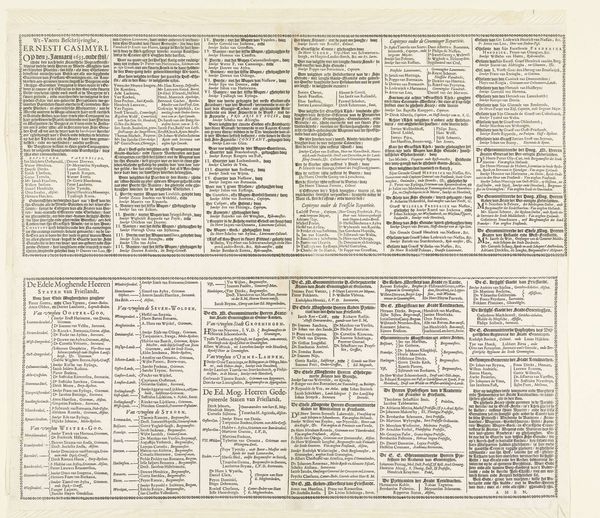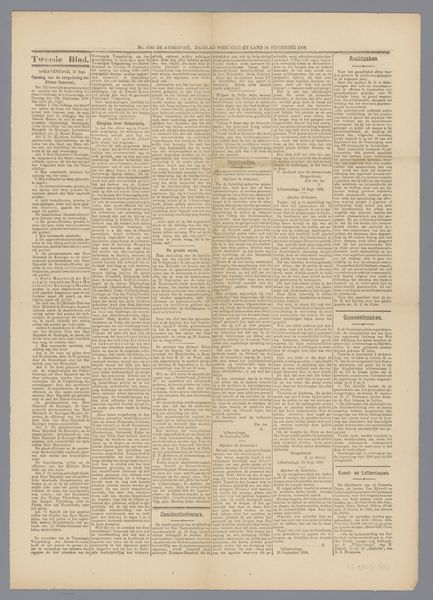
graphic-art, print, photography
#
script typeface
#
graphic-art
#
table
# print
#
small type
#
hand drawn type
#
photography
#
fading type
#
geometric
#
newspaper layout
#
stylized text
#
thick font
#
history-painting
#
handwritten font
#
classical type
#
historical font
Dimensions: height 959 mm, width 440 mm
Copyright: Rijks Museum: Open Domain
Curator: Looking at this print, "Krant met een stamboom van het Huis Nassau," dating probably from 1923 to 1928 and held here at the Rijksmuseum, it strikes me as both information and…well, let's just say dense. What's your initial take? Editor: My first thought is information overload. It's incredibly detailed. I feel a little lost just looking at all that tiny text. Is it meant to be understood at a glance, or is it more of a document to be studied? Curator: Definitely a document to be studied. It’s literally a family tree of the Dutch Royal House of Nassau presented in a newspaper format. Think about how public the private lives of Royals have always been, this object visually articulates these intertwined historical forces. Genealogy, legacy, and media all rolled into one print. Editor: I see what you mean about the publicity element. Putting a royal lineage in a newspaper makes it accessible. The choice of newspaper form is an interesting choice. I suppose it was aiming to legitimize the monarchy? To showcase its deep historical roots in a very public way. Did it feel more "official" being in the format people read every day for their news? Curator: Exactly! By placing it in the "De Telegraaf," it insinuates this history is also the stuff of daily relevance. The design with its formal typeface also mimics established historical displays—visually merging past legitimacy with present authority. Editor: It’s so intricate. I almost wonder about the choice of materials. It has a sense of both permanence and disposability because of the graphic-art medium, if that makes sense. What would possessing this object have represented? Was it collected, like a souvenir? Curator: Perhaps. Consider the socio-political context. This was a period of rebuilding after WWI, when ideas of national identity were powerful. Owning this print, displaying it even, could signify an allegiance or belonging—a literal investment in the Dutch royal story during times of societal shifts. Editor: It certainly gives you a lot to think about regarding the ways that we present and consume images of power. There are echoes to this day of trying to tie tradition to contemporary society. Curator: Precisely. It’s a complex piece. A seemingly simple family tree really opens a whole world of political communication in the early 20th century. It does feel kind of important to understand our cultural history and the subtle propaganda of how a monarchial power remains relevant over generations.
Comments
No comments
Be the first to comment and join the conversation on the ultimate creative platform.
